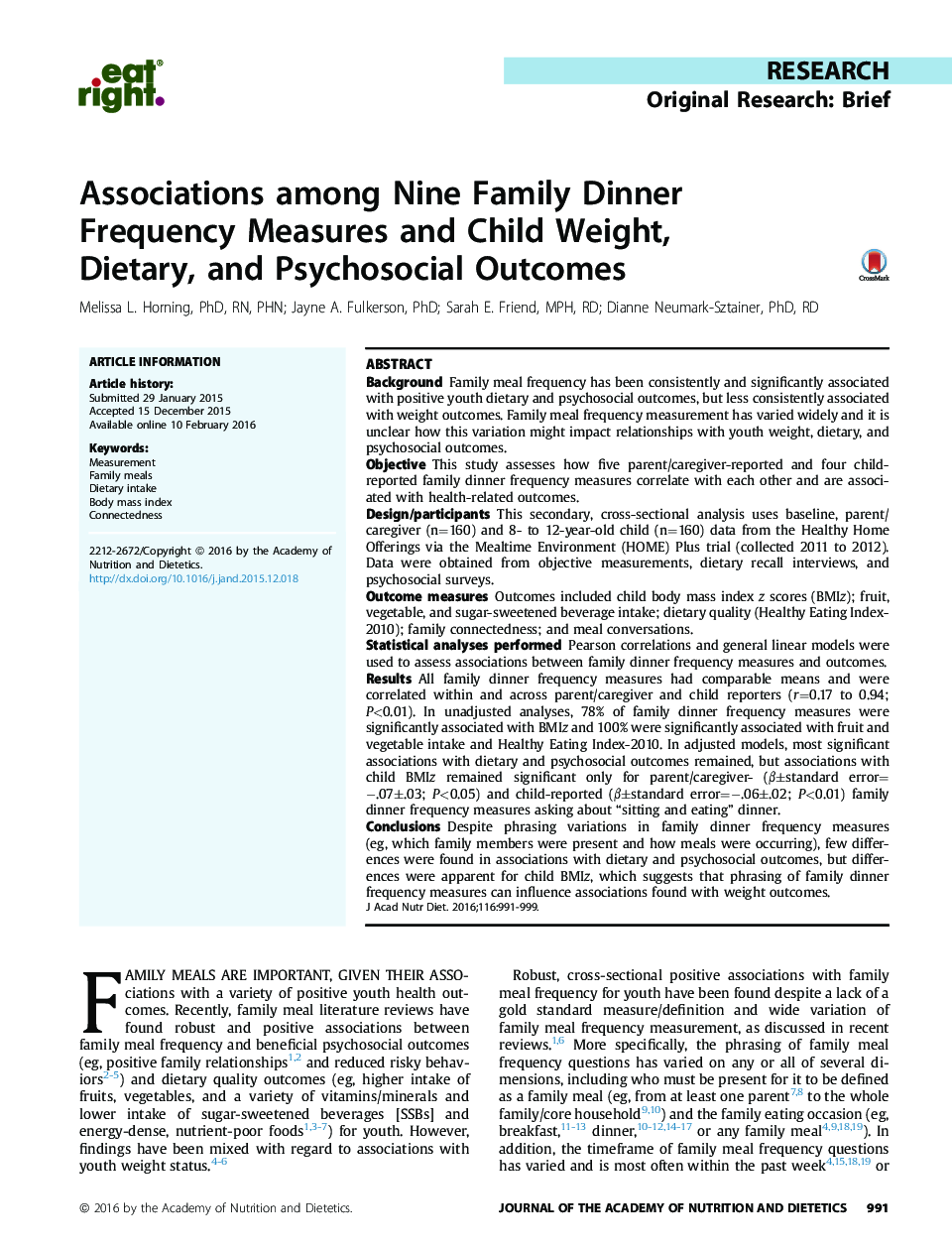| کد مقاله | کد نشریه | سال انتشار | مقاله انگلیسی | نسخه تمام متن |
|---|---|---|---|---|
| 2656624 | 1564036 | 2016 | 9 صفحه PDF | دانلود رایگان |
BackgroundFamily meal frequency has been consistently and significantly associated with positive youth dietary and psychosocial outcomes, but less consistently associated with weight outcomes. Family meal frequency measurement has varied widely and it is unclear how this variation might impact relationships with youth weight, dietary, and psychosocial outcomes.ObjectiveThis study assesses how five parent/caregiver-reported and four child-reported family dinner frequency measures correlate with each other and are associated with health-related outcomes.Design/participantsThis secondary, cross-sectional analysis uses baseline, parent/caregiver (n=160) and 8- to 12-year-old child (n=160) data from the Healthy Home Offerings via the Mealtime Environment (HOME) Plus trial (collected 2011 to 2012). Data were obtained from objective measurements, dietary recall interviews, and psychosocial surveys.Outcome measuresOutcomes included child body mass index z scores (BMIz); fruit, vegetable, and sugar-sweetened beverage intake; dietary quality (Healthy Eating Index-2010); family connectedness; and meal conversations.Statistical analyses performedPearson correlations and general linear models were used to assess associations between family dinner frequency measures and outcomes.ResultsAll family dinner frequency measures had comparable means and were correlated within and across parent/caregiver and child reporters (r=0.17 to 0.94; P<0.01). In unadjusted analyses, 78% of family dinner frequency measures were significantly associated with BMIz and 100% were significantly associated with fruit and vegetable intake and Healthy Eating Index-2010. In adjusted models, most significant associations with dietary and psychosocial outcomes remained, but associations with child BMIz remained significant only for parent/caregiver- (β±standard error=−.07±.03; P<0.05) and child-reported (β±standard error=−.06±.02; P<0.01) family dinner frequency measures asking about “sitting and eating” dinner.ConclusionsDespite phrasing variations in family dinner frequency measures (eg, which family members were present and how meals were occurring), few differences were found in associations with dietary and psychosocial outcomes, but differences were apparent for child BMIz, which suggests that phrasing of family dinner frequency measures can influence associations found with weight outcomes.
Journal: Journal of the Academy of Nutrition and Dietetics - Volume 116, Issue 6, June 2016, Pages 991–999
